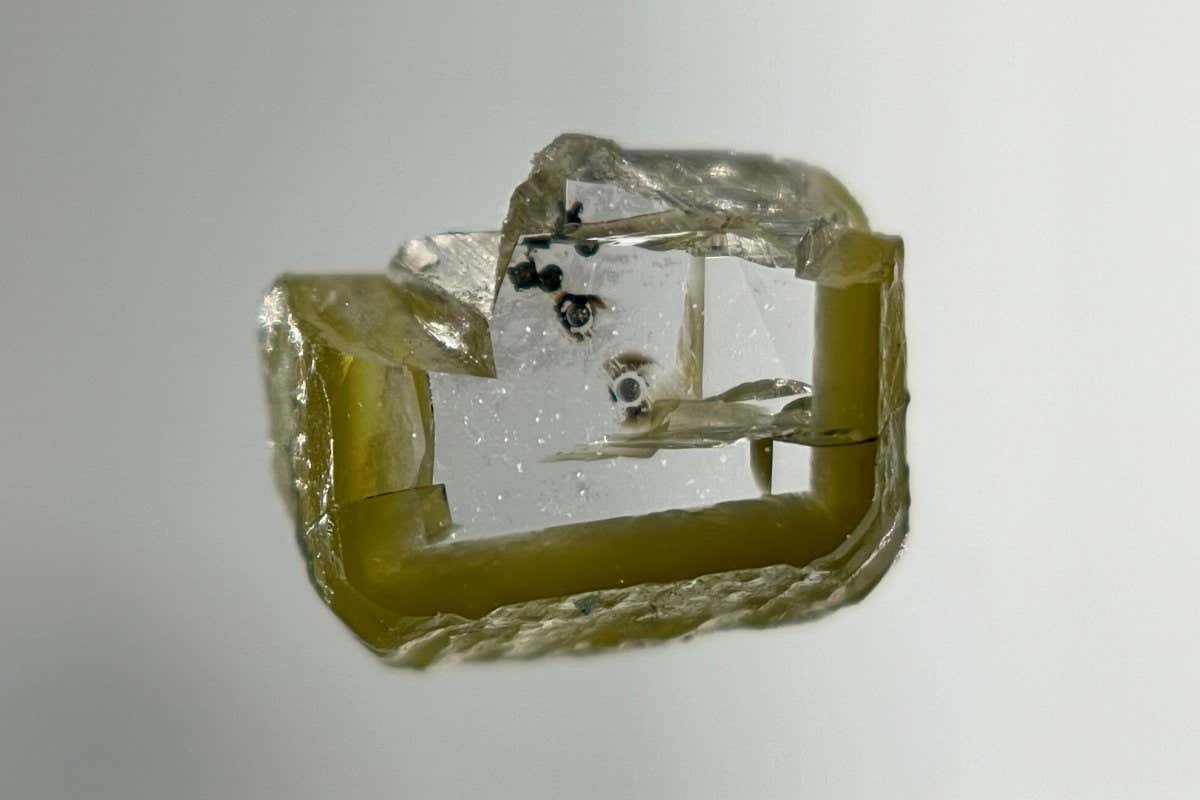A diamond that had crystals of davemaoite inside it
Aaron Celestian, Natural History Museum of Los Angeles County
An ancient diamond found in Botswana has yielded a new and previously unknown mineral called davemaoite. This mineral provides valuable insights into the chemistry of the deep Earth.
The diamond was initially unearthed in a mine in Orapa, Botswana and was sold to a scientist at the California Institute of Technology in 1987. At the time, neither the dealer nor the scientist realized the significance of the diamond.
Recently, the diamond was analyzed by Oliver Tschauner at the University of Nevada, Las Vegas. Tschauner is studying “super-deep diamonds” to gain a better understanding of the Earth’s interior.
Most diamonds form between 120 to 250 kilometers underground, but the “super-deep diamonds” originate from the Earth’s lower mantle, which begins 660 kilometers below the surface.
Using X-rays, Tschauner and his colleagues discovered tiny crystals of a mineral trapped inside the Botswanan diamond. These crystals were then extracted through laser cutting and analyzed using mass spectrometry.
The crystals were identified as a form of calcium silicate with a perovskite structure. This particular perovskite could only have formed under the extreme conditions of the lower mantle, where the pressure is more than 200,000 times greater than at the surface.
The mineral was named davemaoite in honor of deep-Earth scientist Ho-Kwang “Dave” Mao at the Carnegie Institution for Science in Washington DC.
Typically, davemaoite’s crystal structure would break apart due to the drop in pressure when brought to the Earth’s surface. However, because it was trapped inside the diamond, it remained intact during its journey to the surface.
Scientists believe that davemaoite makes up approximately 5% of the Earth’s lower mantle and may also host radioactive elements such as uranium, thorium, and potassium-40, which contribute to the Earth’s heat through radioactive decay.
The discovery of sodium and potassium in the davemaoite is surprising as these elements are usually associated with the Earth’s crust and not the mantle. This suggests that surface material is being recycled back into the mantle.
Researchers like Tschauner are continuing to search for super-deep diamonds in the hope of uncovering more hidden minerals. However, distinguishing between diamonds with shallow or deep origins is challenging, making the search process complex.
Topics:








